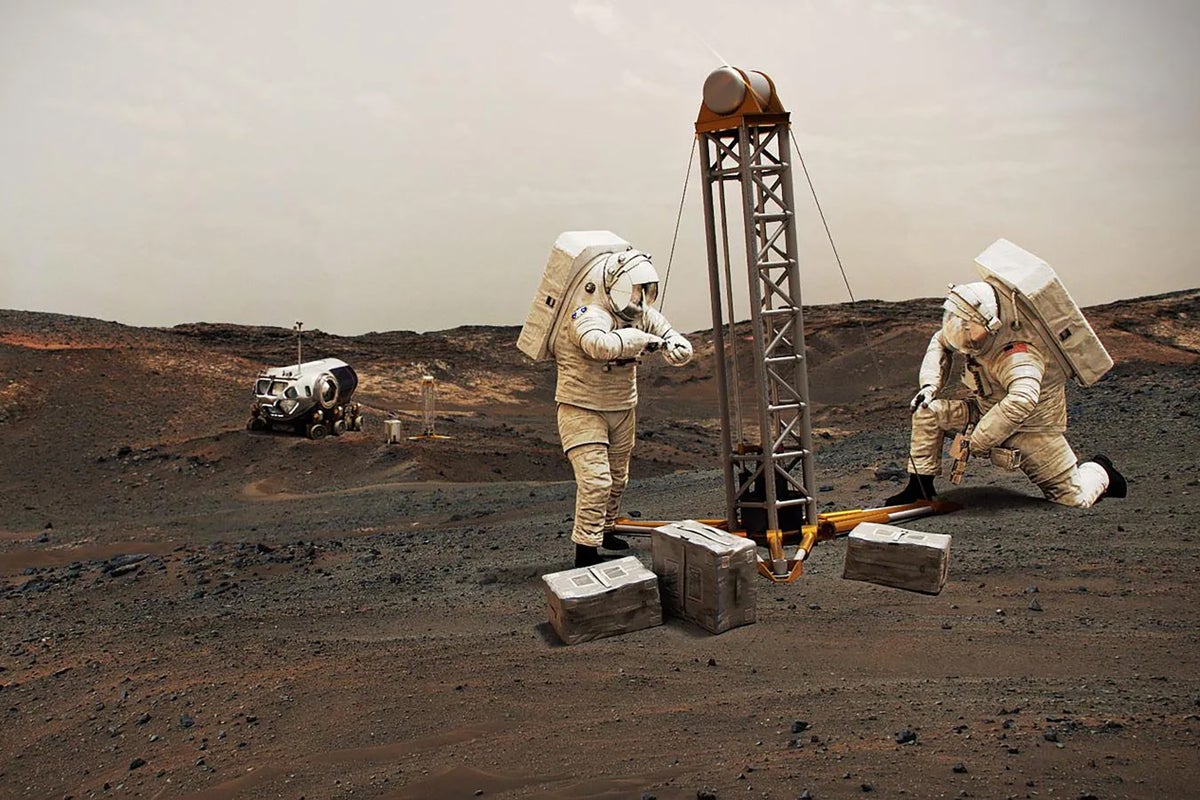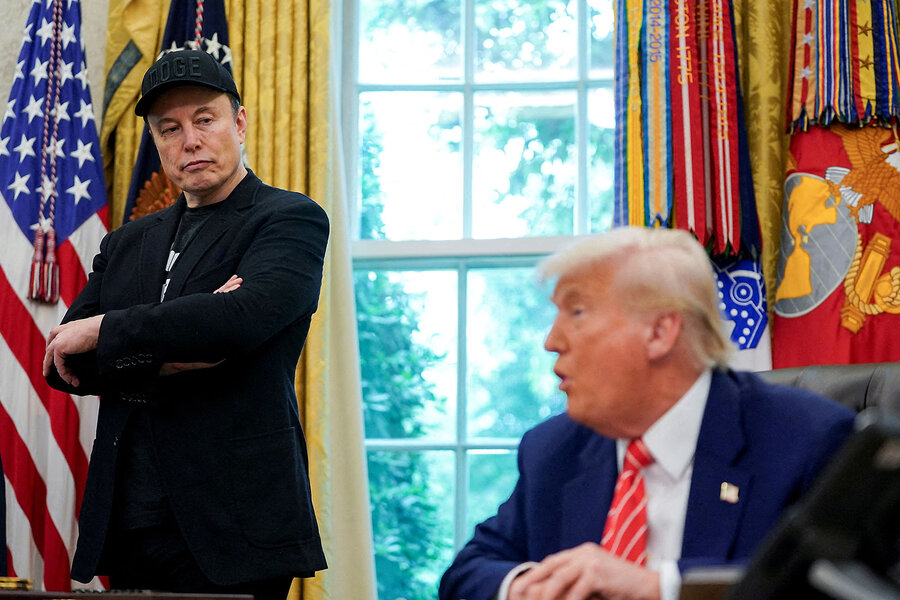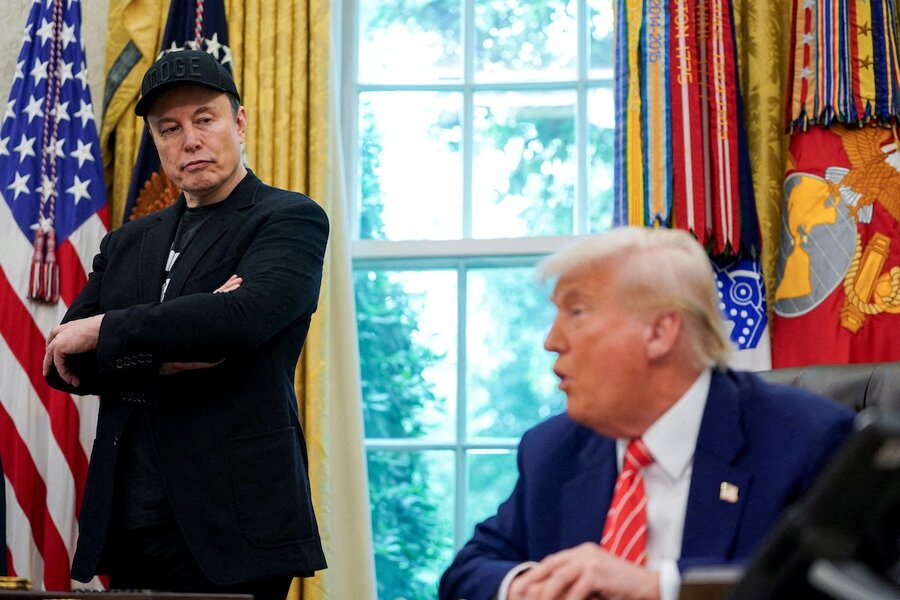Now Reading: Trump’s Cuts Threaten NASA Plans for Astronauts on Mars
-
01
Trump’s Cuts Threaten NASA Plans for Astronauts on Mars
Trump’s Cuts Threaten NASA Plans for Astronauts on Mars

US President Donald Trump last week laid out one of the biggest challenges ever for NASA — to land the first humans on Mars.
But his detailed budget request for the fiscal year 2026 also proposed cancelling dozens of the space agency’s missions, including projects to study Earth, Mars and Venus. And the next day, on 31 May, Trump withdrew his nomination for NASA chief, the businessman and commercial astronaut Jared Isaacman.
All of this has left the space agency in turmoil, and the scientists who normally participate in NASA’s missions split over whether they support the push for the red planet.
On supporting science journalism
If you’re enjoying this article, consider supporting our award-winning journalism by subscribing. By purchasing a subscription you are helping to ensure the future of impactful stories about the discoveries and ideas shaping our world today.
A budget shortfall
NASA has wanted to put people on Mars for decades, but both technological and budget limitations mean that probably will not happen until the 2040s under current plans. Trump wants to accelerate that timeline. On 30 May, the White House proposed to spend some US$1 billion in 2026 on Mars plans, including research into new spacesuits and an astronaut landing system. “These investments will provide the technologies necessary for future Mars exploration and eventual crewed missions to Mars,” the NASA budget plan said.
If the space agency really does want to focus on sending humans to Mars, space-policy specialists say, it will need to massively ramp up its spending. A human mission to Mars is likely to cost hundreds of billions of dollars spread over a number of years; the agency currently spends $25 billion a year on all of its programmes, and Trump has proposed cutting that to under $19 billion. “Right now, with the budgets that are proposed, we can’t afford to send people to Mars,” says John Grunsfeld, an astrophysicist and former NASA astronaut who led the agency’s science programmes from 2012 to 2016.
Trump’s latest rhetoric on Mars echoes decisions he made during his first term as president, when, in 2017, he announced that NASA would send astronauts back to the Moon. In 2022, the agency tested a mega-rocket that is intended to achieve that objective, but that mission, Artemis I, was uncrewed. Many technical challenges remain before people can be put on the lunar surface — a goal currently slated for 2027.
One challenge is achieving success with the giant Starship vehicle, built by the aerospace company SpaceX in Hawthorne, California. Once NASA’s mega-rocket has propelled astronauts into lunar orbit, they will rendezvous with Starship, which will fly them to the Moon’s surface. But Starship has yet to orbit Earth successfully, much less demonstrate the frequent launches and in-space refuellings needed for the Moon landing; its most recent test flight ended in an explosion on 27 May.
Days after that blow-up, Elon Musk, the billionaire chief executive of SpaceX who has advised Trump, said he still hoped to launch the first Starship to Mars next year. Some scientists have been put off the idea of landing humans on Mars by Musk’s involvement. The technology entrepreneur has long talked of colonizing the red planet, but with little consideration of societal ethics or international norms. In recent months, he led the Trump administration’s efforts to downsize the US government and slash its science funding, even as SpaceX is likely to compete for billions of dollars’ worth of government contracts on the quest for Mars.
A tough environment
Others are more excited about the prospect of landing people on the red planet. NASA has overseen missions to Mars many times, sending a series of robotic spacecraft, including the Curiosity and Perseverance rovers. Some researchers say that astronauts could explore more quickly and gain better insight into whether Mars has ever hosted extraterrestrial life. “If we definitively want to answer the question of whether Mars had life or has life today, I think we have to send humans,” says Tanya Harrison, a planetary scientist with the Outer Space Institute who is based in Ottawa, Canada.
But even those in favour caution that a journey to Mars would not only be costly — taking funding away from numerous other research programmes — but would also pose many physical risks. On the way to Mars, astronauts would face extreme isolation and higher doses of deadly space radiation over longer periods than they have ever been exposed to on the Moon or on space stations. If they were to land successfully on Mars, they would have to get out of their capsule without collapsing after the zero-gravity voyage; begin working in a frigid environment where the soil is full of toxic chemicals and there is almost no air to breathe; and deal with abrasive dust storms.
There are solutions, such as living inside an underground lava tube that was created by volcanic activity, which could offer protection against radiation and dust storms. But visiting Mars will be like visiting Antarctica — another hostile, perilous environment — with vastly greater risks, scientists say. “I want to disabuse people of the assumptions that they have that humans are going to be fine,” Erik Antonsen, a researcher in space physiology at Massachusetts General Hospital in Boston, said at conference on human space exploration on 28 May.
Science at the table
Trump’s proposal is likely to have support from some politicians in the US Congress. They might vote to appropriate at least a proportion of the vast sums required to go to Mars because they are keen to achieve exploration milestones before China’s burgeoning space agency does. China has announced plans to put astronauts on the Moon by 2030, and on Mars after that.
So some scientists are determined to make the best of it. “Given that there is active planning going on for developing the architecture for human missions through NASA, we feel it’s important that science has a seat at the table,” says Bruce Jakosky, a planetary scientist at the University of Colorado Boulder. He and others led a study in 2023 that identified key scientific goals, including studying astrobiology, that astronauts might accomplish on the red planet.
In the near term, Jakosky says, NASA should prioritize a robotic mission to bring back dozens of rock, dirt and air samples gathered on Mars by the $2.7-billion Perseverance rover. Doing so would demonstrate that the agency is capable of sending spacecraft to and from Mars, he says, and would allow scientists to analyse the rocks for signs of life and for clues to how toxic the Martian surface could be. However, the agency has struggled with how to pay for such a mission, and Trump has proposed cancelling it.
In Grunsfeld’s view, NASA should focus on building a streamlined architecture to get humans to Mars as simply as possible. That could mean, for example, testing new spacesuit designs at the International Space Station and dropping plans for astronauts to build extensive Moon bases. “We need to use the technology we have to the maximum extent,” he says.
Whatever NASA, Congress and Trump decide, the current political uncertainty is a huge challenge, Harrison says. She worries that last week’s proposals might not lead to sustained momentum: “Is this blustering for right now, and will Mars be forgotten a year from now?”
This article is reproduced with permission and was first published on June 4, 2025.























